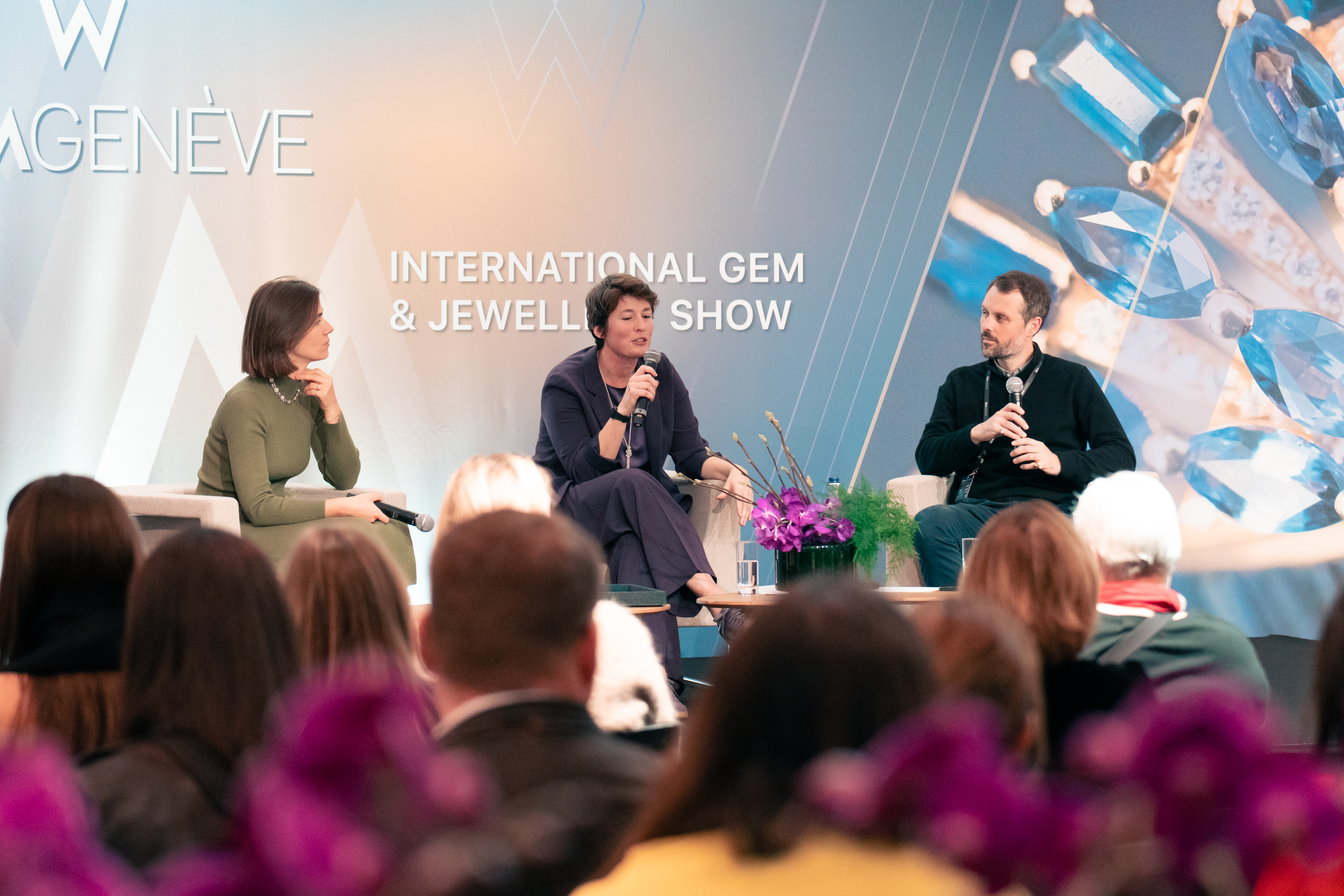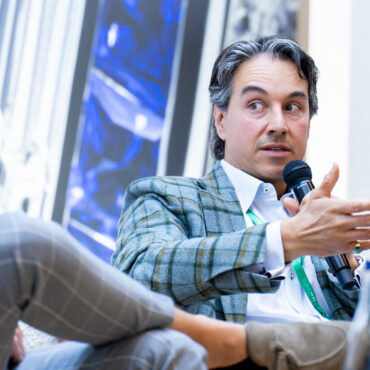The conference titled “Pearls of Truth: A conversation about pearl history, meaning and testing since antiquity” features Laurent Cartier as the moderator, along with panellists Kathia Pinckernelle, a jewellery historian based in Geneva, and Violaine Bigot, Head of the Heritage Collection at Chaumet. The discussion focuses on pearls, covering their history, meaning, value, symbolism, and the evolution of natural, cultured, and imitation pearls.
Laurent Cartier introduces the session by emphasising pearls’ unique symbolism and significance, especially in contrast to other gemstones. The panel begins with a historical overview provided by Kathia Pinckernelle. She highlights the universal appeal of pearls, citing examples from various cultures such as China, India, Persia, Greece, Rome, and Byzantium. She notes the consistently high value placed on pearls and their significance in different societies throughout history.
The discussion progresses through different historical periods, including the Renaissance, Baroque, 19th century, and the subsequent Belle Époque and Art Deco eras. Special attention is given to the impact of historical figures like Henry VIII and Elizabeth I and the role of pearls in propaganda during the 17th century.
Violaine Bigot provides insights into the cultural significance of pearls, especially in Place Vendome during the 18th, 19th, and 20th centuries. She describes pearls as a symbol of power and wealth, highlighting their popularity among the aristocracy and the emerging bourgeoisie. The discussion touches on the various forms in which pearls were worn, from necklaces to tiaras, reflecting both power and fashion.
The conversation then shifts to the early 20th century, particularly the influence of Mikimoto in successfully marketing cultured pearls. This development led to debates and court cases about distinguishing between natural and cultured pearls. Laurent Cartier emphasises the need for gemological laboratories to identify and differentiate pearls, and Violaine Bigot shares Joseph Chaumet’s early efforts in establishing a gem lab for this purpose.
The discussion then delves into the emotional aspects surrounding the debate over real and cultured pearls, drawing parallels with the present-day debate over synthetic diamonds. The historical perspective offered by Kathia Pinckernelle includes examples of early imitations in ancient Rome and the contemporary use of fake pearls by Coco Chanel, who blended them with real pearls for practical and aesthetic reasons.
The conference continues with a mention of imitation peaks throughout history, leaving the audience with a comprehensive understanding of pearls’ historical, cultural, and emotional dimensions.
The discussion between Laurent, Violaine, and Kathia also explores various facets of pearls, from historical perspectives to the evolution of attitudes towards natural and cultured pearls.
Laurent posed questions about Joseph Chaumet’s stance on pearls. Violaine elucidated that Joseph Chaumet, the founder of Chaumet, firmly believed in the exclusivity of natural pearls. Despite his apprehensions about cultured pearls, the shift towards using them began in the 1960s and 1970s. This transition was prompted by improvements in cultured pearl production, offering more varied and aesthetically pleasing options than natural pearls.
Violaine also explained that Chaumet’s reluctance to embrace cultured pearls was rooted in the fear of diluting their significance. However, as the production of cultured pearls improved and the scarcity of natural pearls increased, jewellery houses, including Chaumet, began incorporating cultured pearls into their designs.
The conversation then shifted to the economic factors influencing the natural pearl market. Violaine dispelled the notion that the Great Depression immediately rendered natural pearls worthless. Instead, the market readjusted gradually, impacted by geopolitical events such as the Russian Revolution and the discovery of oil in the Middle East.
The discussion delved into the factors affecting the supply of natural pearls, including the shift in focus of pearl fishers due to the discovery of oil in the Persian Gulf. Overfishing in regions like Mexico and French Polynesia further contributed to the decline in natural pearl supply.
Kathia provided additional insights into the historical techniques of imitating pearls, such as using mercury in Venetian glass beads during the 16th century. She highlighted an innovative imitation development involving fish scales, known as “essence d’orient,” which replaced mercury due to health concerns.
The conversation also addressed the challenges in identifying pearls in historical art. Kathia emphasised the difficulty of determining whether pearls depicted in paintings were natural or imitations, highlighting the importance of written archives and detailed descriptions for authentication.
The symbolic significance of pearls in art, particularly in portraying power, wealth, and purity, was explored. Kathia underscored the enduring association between pearls and love throughout history, connecting them to Venus, the goddess of love.
The discussion turned to influential figures in the context of pearls, including Jacqueline Kennedy and Elizabeth Taylor. Jacqueline’s sentimental attachment to her fake pearls challenged conventional notions about the necessity of genuine pearls for meaningful jewellery. The conversation highlighted the diversity of pearls, breaking away from the classic image of white round pearls promoted by fashion icons like Coco Chanel, Grace Kelly, and Audrey Hepburn.
To this effect, Laurent presented two historical figures, Cleopatra and Mark Anthony, as symbolic of opulence and luxury associated with pearls. Sir Walter Raleigh was also featured, emphasising that men historically wore pearls, challenging the perception that pearls were exclusively for women.
The conference concluded by acknowledging pearls’ evolving symbolism beyond being white and round. Laurent highlighted the enduring fascination with pearls, encompassing imitation, cultivation, and admiration for natural pearls, indicating a continued appreciation for these timeless gems.
Moderator: Laurent Cartier
Panelists: Kathia Pinckernelle and Violaine Bigot





